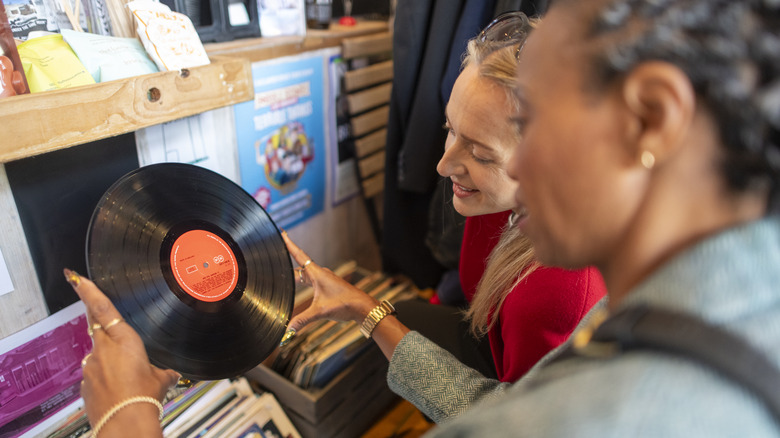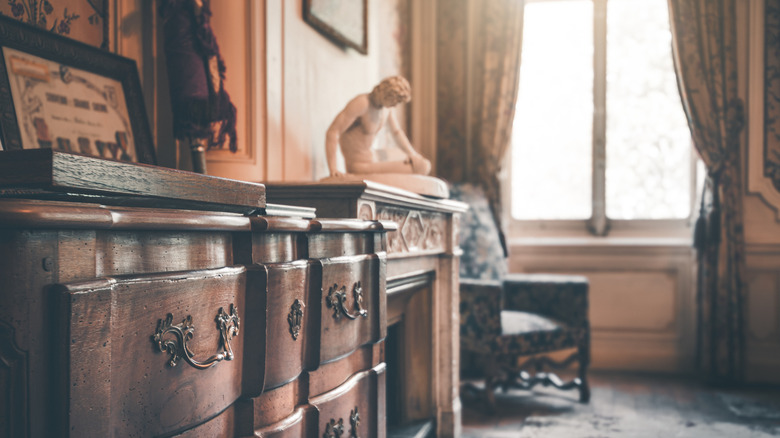The Very First Thing You Should Do After Thrifting (& No, It's Not Cleaning)
If you frequent the local thrift store every week or so, looking for those one-of-a-kind, treasured antique items, you may have your own process for incorporating those vintage finds into your decor. But, if you're new to thrifting, you may not know where to start when it's time to place the piece. Well, the fun part about thrifting is that it offers you creative ways to add unique furniture and home accessories, so it's okay if you don't have a concrete plan for it as you head toward the checkout line. Luckily, there are some pointers you can take into consideration once you have it home.
The very first thing you should do (which has nothing do with cleaning) is try to find a place for the item as soon as you get it home. If you can't find any that work well, don't force it. This is a common and major home decorating mistake that'll leave you with a room that looks overcrowded or unbalanced, rather than fluid and tasteful. If you can't find a space where the furniture or decor accessory works, just place it in storage for use later on. Also, when considering how to enhance a room with the piece, try to think outside of the box, relaxing your expectations about dimensions or intent. In other words, it's best to sort of freestyle it. Sure, you want to stick with your main theme, but try to avoid being too heavy-handed in doing so — this can make finding a place for thrifted items even more challenging. Think of the big picture when curating a room, while also considering whether any new pieces will make the room look personal and intentional.
More tips on how to place thrifted furniture in your home
Start by setting your decor item in a few different locations, and even different rooms in your home, to see where it may fit best. Giving the piece a functional role can also be a great way to help you decide the best spot for it. For example, if you've been looking for ways to get that vintage bathroom look you saw online, the framed vintage print you picked up last weekend may be the perfect addition. When moving the piece to different rooms, consider unexpected areas, such as bookshelves, mantels, or entryways that could use a more decorative touch. This way, you can see how the piece fits along other furniture and under different lighting — it doesn't have the be the star of the room. For example, a stained glass vase may look more striking sitting in the kitchen window with access to ample natural lighting, than on a dining room table under dimmer, yellower lights.
When you have accessories that don't make sense anywhere for the moment, storage is always the next best thing. And, if you're a frequent thrifter, creating a dedicated space for these items may be helpful. Consider putting them in a closet, basement, or garage. The next time you redecorate or do some spring cleaning, revisit them.
If you come across a piece that stands out, but its size or shape is making it hard for you to place it, know that it's alright to veer away from its original intent. A sofa end table can easily become a conveniently located stand for your knitting containers or plants. It's less about rules and more about creating visual balance.

